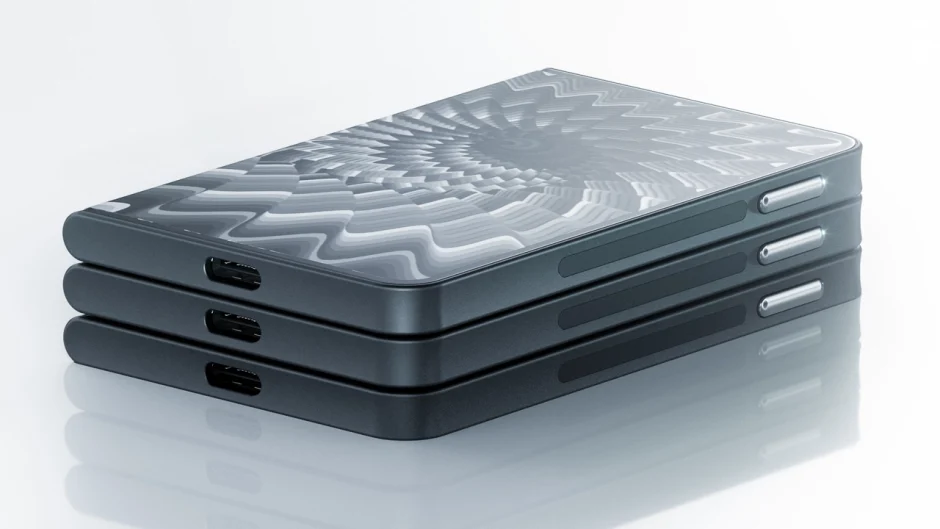Ledger is a Crypto wallet maker company and it has partnered with Tony Fadell, the well-known creator of Apple’s iPod and the co-founder and former CEO of thermostat company Nest, to create its Ledger Stax hardware wallet. With the Stax, Ledger was hoping to develop a more stylish and functional device than the previous Nano S, which looks more like a USB thumb drive – and one that can win mass adoption by crypto users, according to Pascal Gauthier, Ledger’s CEO, and chairman. Ian Rogers, Ledger’s chief experience officer said:
“We wanted to do something that is more fun and fits with where culture is going,”
The new Stax wallet is a credit card-sized device with embedded magnets so that multiple devices can easily be stacked. The outside is a wraparound e-ink display that can show transaction details and even NFTs. The Ledger Stax will retail for $279, compared to $79 for the Nano S Plus and $149 for the Nano X wallet.
“We were ready for this moment,”
It’s perhaps a propitious time Ledger has chosen to launch a new hardware wallet as interest in self-custody appears to be picking up following the collapse and asset freeze at centralized crypto exchange FTX and other crypto firms. Ledger said Nov. 14 – three days after FTX filed for bankruptcy – was the best sales day ever for its devices, while the previous day was its second-best sales day ever. And November was its best sales month ever. Ledger said it has sold over five million hardware wallets in 200 countries since the company was founded in Paris in 2014.
The Ledger Stax will be available in the first quarter of 2023 with pre-ordering available on Ledger.com. It uses secure USB-C to connect to the Ledger Live app on a laptop, and Bluetooth to connect to the mobile app on a smartphone. It will also utilize the upcoming wallet extension Ledger Connect to Web3 apps.
Charles Guillemet was Fadell’s Ledger’s operations guide, who joined the company in 2017. Inside its headquarters, behind a giant medieval-style door off a Paris lane, Guillemet created the Donjon, a jacked-up security lab that verifies the resilience of every aspect of the hardware, down to the chip circuits. Inside the Donjon, motherboards get probed as if in a 21st-century version of Frankenstein’s lab.
Lasers connected to oven-sized oscilloscopes poke at chips to observe how they might fail. Guillemet told Fadell he was appalled at the idea of people securing their assets on laptops or iPhones, which he deemed hopelessly vulnerable. He despised fingerprints and facial recognition. Your biometrics are public, after all, and can be counterfeited.
Adding a touchscreen to the wallet presented a risk, though—a sophisticated attacker could, with the right equipment, pick up electronic signals leaking through the screen and figure out the pin code that unlocks the device. So Ledger’s engineers had to shield the screen so it emitted no digital exhaust. They also wrote their own driver, the code that helps render pixels on the screen.
“You’re compromising security if you use a driver written by someone in China that you’ve never met,”
It may be a stretch to imagine a mass movement toward crypto coins and digital goods. Ledger’s very long-term vision is that with secure, well-designed hardware as a bedrock, people will gravitate to crypto to verify their identity and credentials. Think driver’s licenses, passports, proof that you passed your dentistry boards, Taylor Swift tickets, and voter ID. Rogers says that when he attended the NFT NYC conference earlier this year and digitally verified he had the token required to register for exclusive events, an irony struck him.
“The technology I use to get into parties is more secure, easier to use, and better than the technology that I use to get into our country! Fast-forward into the future and your government document is in your hardware wallet.”
We’ve already seen the FTX of Web3, so there’s nowhere to go but up. For now, Tony Fadell’s latest technology tour de force stands as a friendly hardware ambassador for a future that’s still far away for most of us, and a glimpse of how we might wind up with something useful, accessible, and enriching—from what so far has been a blockchain of fools.
Read More:












